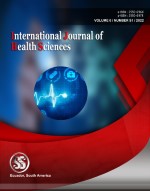Wind interference effect on a hexagonal-shaped high building with orifices
Keywords:
Hexagonal-Shape Building, ANSYS (CFX), Wind Pressure Coefficient, Contours, Interference FactorAbstract
This research examined at how the wind load and pressure on a tall hexagonal structure varied as the apertures changed. Wind angles ranging from 0 to 90 degrees with a 30-degree gap were employed in various situations. The distance between the interference building and the model building was also gradually increased, at 50mm intervals, from 50mm to 200mm. The major building model was examined at a scale of 1:500. The validity of the ANSYS CFX package was also evaluated using a rigid model with dimensions of 100mm x 100mm and a height of 700mm. The k-ε -turbulence model was used in the study, which was carried out using Computational Fluid Dynamics (CFD) and the ANSYS CFX software package. To demonstrate the link between distinct scenarios, interference factors (IF) and contours were employed. Interfering buildings' impacts on the hexagonal-shaped building are explored. The pressure coefficient of the faces rises as the distance between the interference building and the model building grows. The impacts of apertures on the model building were also examined, with 5-20% openings given.
Downloads
References
Gu M, Quan Y. Across-wind loads and effects of super-tall buildings and structures. Science China Technological Sciences. 2011 Oct;54(10):2531-41.
Kumar A, Raj R. Study of Pressure Distribution on an Irregular Octagonal Plan Oval-Shape Building Using CFD. Civil Engineering Journal. 2021 Oct 1;7(10):1787-805.
Bhattacharyya B, Dalui SK. Investigation of mean wind pressures on ‘E’plan shaped tall building. Wind and structures. 2018 Feb 1;26(2):99-114.
Dagnew AK, Bitsuamalk GT, Merrick R. Computational evaluation of wind pressures on tall buildings. In11th American conference on Wind Engineering. San Juan, Puerto Rico 2009 Jun 22.
Bhattacharyya B, Dalui SK. Along and across wind effects on irregular plan shaped tall building. InAdvances in Structural Engineering 2015 (pp. 1445-1460). Springer, New Delhi.
“IS (Indian Standard). 2015. Indian standard code of practice for design wind load on building and structures. IS 875 (Part 3). New Delhi, India: IS.”
Mukherjee S, Chakraborty S, Dalui SK, Ahuja AK. Wind induced pressure on' Y' plan shape tall building. Wind & structures. 2014;19(5):523-40.
Sanyal P, Dalui SK. Effects of side ratio for ‘Y’plan shaped tall building under wind load. In Building Simulation 2021 Aug (Vol. 14, No. 4, pp. 1221-1236). Tsinghua University Press.
Pal S, Raj R. Evaluation of wind induced interference effects on shape remodeled tall buildings. Arabian Journal for Science and Engineering. 2021 Nov;46(11):11425-45.
Jones WP, Launder BE. The prediction of laminarization with a two-equation model of turbulence. International journal of heat and mass transfer. 1972 Feb 1;15(2):301-14.
Menter FR. Two-equation eddy-viscosity turbulence models for engineering applications. AIAA journal. 1994 Aug;32(8):1598-605.
Jensen G, Franke J, Hirsch C, Schatzmann M, Sathopoulos T, Wisse JA, Wright N. Impact of Wind and Storm on City and Built Environment–Working Group 2 CFD Techniques– Computational Wind Engineering. Inconference; COST Action C14, Impact of Wind and Storm on City Life and Built Environment; 2004-05-05; 2004-05-07 2004.
Pal S, Raj R, Anbukumar S. Bilateral interference of wind loads induced on duplicate building models of various shapes. Latin American Journal of Solids and Structures. 2021 Jul 26;18.
Lin N, Letchford C, Tamura Y, Liang B, Nakamura O. Characteristics of wind forces acting on tall buildings. Journal of Wind Engineering and Industrial Aerodynamics. 2005 Mar 1;93(3):217-42.
Published
How to Cite
Issue
Section
Copyright (c) 2022 International journal of health sciences

This work is licensed under a Creative Commons Attribution-NonCommercial-NoDerivatives 4.0 International License.
Articles published in the International Journal of Health Sciences (IJHS) are available under Creative Commons Attribution Non-Commercial No Derivatives Licence (CC BY-NC-ND 4.0). Authors retain copyright in their work and grant IJHS right of first publication under CC BY-NC-ND 4.0. Users have the right to read, download, copy, distribute, print, search, or link to the full texts of articles in this journal, and to use them for any other lawful purpose.
Articles published in IJHS can be copied, communicated and shared in their published form for non-commercial purposes provided full attribution is given to the author and the journal. Authors are able to enter into separate, additional contractual arrangements for the non-exclusive distribution of the journal's published version of the work (e.g., post it to an institutional repository or publish it in a book), with an acknowledgment of its initial publication in this journal.
This copyright notice applies to articles published in IJHS volumes 4 onwards. Please read about the copyright notices for previous volumes under Journal History.
















